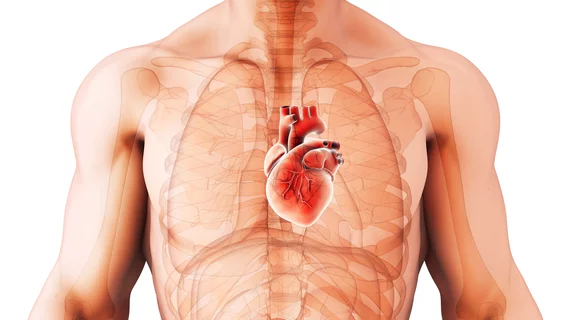Ultra-high-resolution CTA accurately assesses severely calcified vessels, overcoming CT’s limitations
Ultra-high-resolution imaging accurately assesses patients with severe coronary artery calcification, overcoming the limitations of conventional approaches, according to preliminary study results.
Coronary CT angiography (CTA) is becoming the first-line imaging test for patients with suspected coronary artery disease. But the exam is less accurate for those with severe calcification or coronary stenting, experts explained in Radiology: Cardiothoracic Imaging.
With this in mind, Johns Hopkins researchers turned to ultra-high-resolution CTA. Testing the technique on 15 patients, UHR-CT detected stenosis with 86% sensitivity and 88% specificity, while notching high image quality scores.
“UHR-CT appears promising for accurately defining the coronary anatomy in the setting of severe coronary calcification and stents,” Jacqueline Latina, and colleagues with the Baltimore medical school’s Division of Cardiology, Department of Radiology and Department of Medicine, wrote Aug. 26. “These preliminary results indicate UHR-CT may overcome an important limitation of conventional-resolution CT in this challenging and important patient population.”
For the study, Latina et al. enrolled 13 participants (53-79-years-old) with a history of CAD to undergo invasive coronary angiography. All patients had UHR-CT performed within 30 days before cardiac catheterization. COVID-19 forced the team to move ahead with a small patient cohort.
The group noted UHR-CT images achieved higher diagnostic confidence scores (4.3 of 5) yet considerably greater overall image noise compared to conventional CT.
Two National Institutes of Health doctors shared their thoughts in an editorial accompanying the study. While the results show ultra-high-resolution CT may “fulfill current unmet needs” facing CT, there are a few roadblocks to overcome, Sujata M. Shanbhag, MD, and Marcus Y. Chen, MD, remarked.
Future efforts will need to reproduce these results in large, multicenter populations, the pair noted. Issues regarding temporal resolution and image noise also stand in the way. But the path forward is bright, the editorialists explained.
“With future refinements in UHR-CT technology, there is promise for improved patient risk stratification, plaque characterization, function flow reserve assessment, and microvascular disease assessment,” the authors concluded.
Read the full study here.

